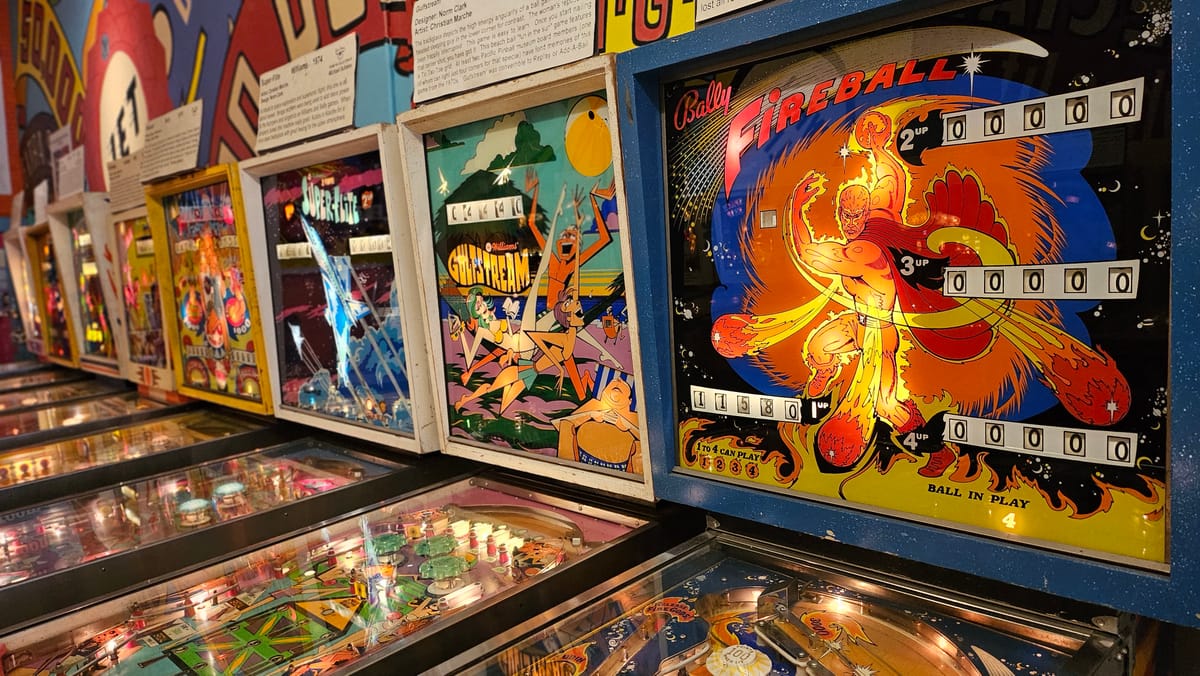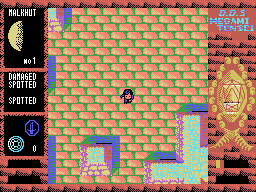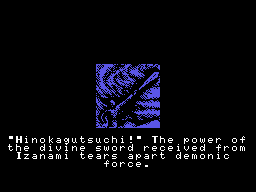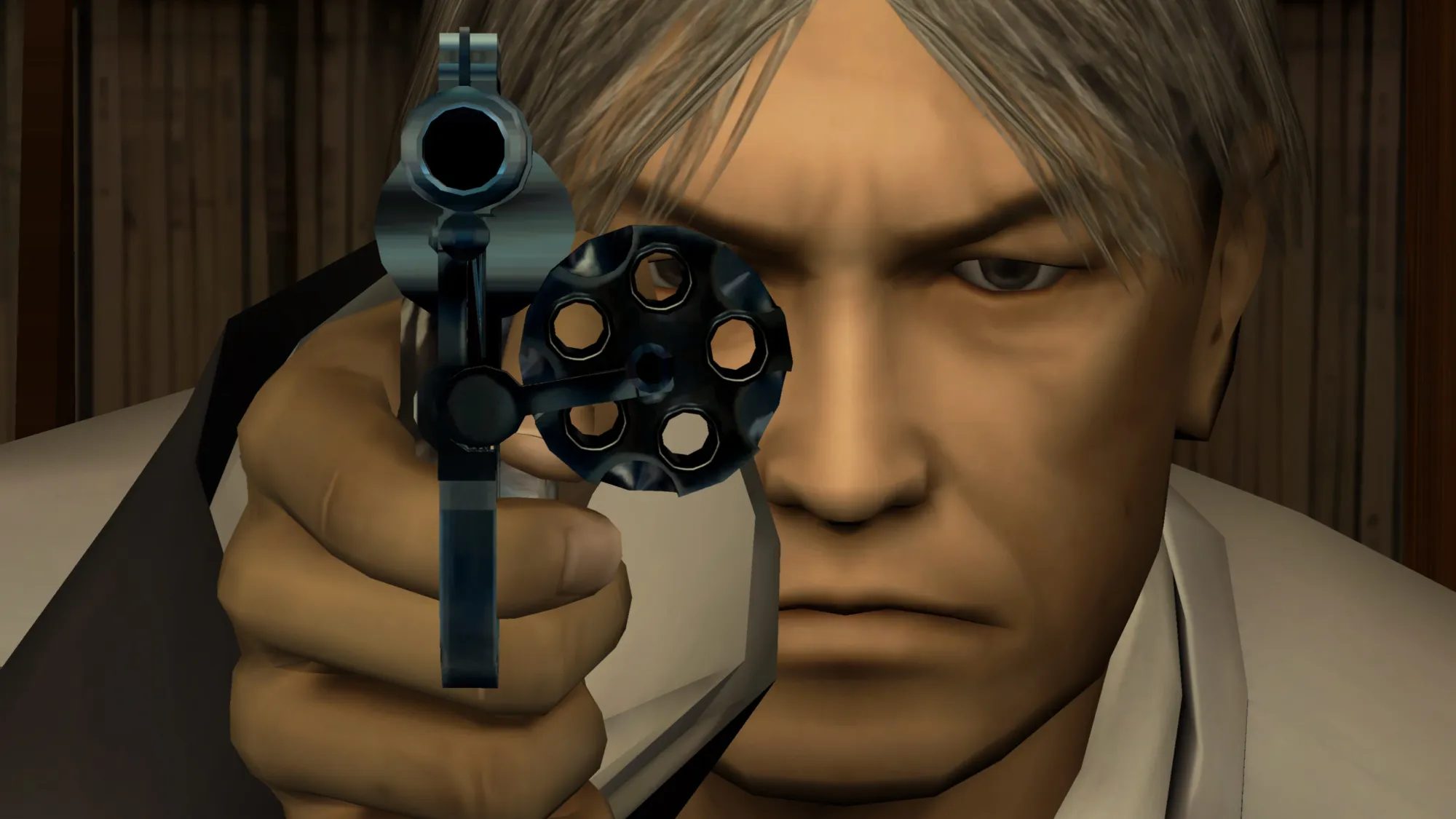How upscaled HD texture mods are made
Plus: A quintessential Japanese roguelike gets translated, a new MiSTer Core, and the Megami Tensei game you've never heard of.

We interrupt your regularly scheduled screenshots of emulated videogames to bring you the above: a photograph of pinball tables. I know this is an extreme swerve — cancel your subscriptions if you must!!! But my pinball love shall not be silenced.
I spent this Saturday at the Pacific Pinball Museum, one of my favorite spots in the San Francisco Bay Area. They have a great selection of games, new and old, and pinball just hits different when all the machines are on free play instead of sucking down quarters with every gutter ball. Did I pay more to get in the door than I would've spent in quarters? Probably! But the mind is soothed nonetheless. The selection of games at the Pacific Pinball Museum rotates fairly often, but I was excited that one of my favorite tables — maybe my #1, honestly — was there and in good shape: 1997's No Good Gofers, which has a wild trick shot ramp for a hole-in-one and a pop-up gopher who I love smacking in the face. It's so much better than an off-brand Caddyshack table has any right to be. Heck, it's so much better than Caddyshack.
As I've gotten more into game emulation over the years, I've become more enamored with replicating and transforming old game experiences in new ways, separated from their original hardware. Okay, so I do have a mini fleet of retro systems with RGB cables underneath my TV along with a RetroTink 5X; but I also love being able to reproduce scanlines and the curve of a CRT on my Steam Deck in Duckstation while playing Parasite Eve, or installing HD texture packs in Dolphin to make Paper Mario: The Thousand Year Door's UI sing at 4K. (In fact, that's what the main interview for this week's issue is focused on; what a clever and relevant anecdote I just worked in 😎). I don't think it's a coincidence that at the same time I've gone deeper into that more ephemeral side of games, I've fallen more and more in love with real, physical, go-to-a-place-and-play-it pinball.
There's just absolutely no replicating the pinball experience in a videogame. Sorry, pinball videogames! You're cool, but you're a different thing; you don't have the same clanging, the feeling of smashing the flipper buttons, the unexpected moments when the ball bounces up to smack into the glass top or vaults over a piece of the playfield it wasn't supposed to leap. Ya just can't emulate that. But you can go out in the world and find it — if you haven't played real pinball in ages, check out the website Pinball Map to find some machines near you.
Alternately, play a pinball videogame that really tries to do its own digital thing with the game, like Xenotilt (what if pinball was bullet hell?) or Yoku's Island Express (what if pinball was Metroid?).
Orrrr you could spend Sunday reliving the pinball of my youth, Epic MegaGames Pinball, one of the first handful of games published by Epic and one of the first developed by Digital Extremes founder James Schmalz, before the two teamed up to make a little series called Unreal.
(If the above embed doesn't work for you, you can find it on Archive.org.) It has a cool Android in it. Enjoy.
The Big Two
1. How HD texture packs are made, with modder Panda_Venom

It's been at least a decade since I started messing around with HD texture replacement mods for Dolphin. Back in the same era I was overclocking my Core i5-2500k to get a few more frames out of Super Mario Galaxy 2, I was also discovering that massively upsressing those early 2000s 3D games could produce incredible results... for everything but the UI. HD textures to the rescue! These painstaking projects take those original assets and rebuild them for modern displays, making them appropriately sharp next to higher internal resolution 3D, and even compensating for widescreen mods and the like.
They also represent one of the few uses of "AI" that doesn't immediately make me want to barf: in just the last 4 years or so, more modders have been experimenting with machine learning models to get much cleaner images out of low-res, tiny texture files. My favorite example is probably the Moguri Mod for Final Fantasy 9, which looks far better than Square Enix's own attempt to upscale the game for modern displays. I hadn't been keeping up with how those tools have advanced recently, so I reached out to Panda_Venom, who's released more than 40 upscale packs for PCSX2 and Dolphin.
"A few years ago I read that the PS1 emulator Beetle got a new texture replacement function and I thought I'd try it with one of my favorite games, Xenogears," Panda_Venom says. "My first project and in hindsight I consider it very amateurish. I'll try it again someday when I have time."
Panda_Venom started upscaling more seriously when PCSX2 added a texture dumping feature. Getting ahold of the original textures is the first step — while that's possible through hacking, Panda_Venom uses the simpler method of playing a game, then using emulators' built-in tools to dump the textures.
"It's a very time-consuming task, because you have to play the game through, sometimes even several times, because you can only dump the texture that you see on the screen (or it's in the VRAM)," he says. "In the case of a 120-hour Dragon Quest 5, this can be several weeks/months. Luckily I got help with some games, we dumped/collected the textures as a team."


First: Upscaled Ground texture. Second: Original.
Most of the image processing is now automated. Here's how it works:
"First of all, I use batch scripts and Python scripts to sort the textures. I'll try to filter out the wrong or duplicated textures. I use ChaiNNer for most of the textures. Recently, I mainly use Venomalia's 4xHDCube models, I have 4-5 presets for different cases. I sometimes use Topaz AI for photorealistic images and Photoshop or GIMP for the UI assets and text.
"Floor, wall or character textures are the easiest, even with low resolution you can achieve a very nice improvement. The worst are clearly the texts and small icons, logos, etc, they are sometimes very difficult to improve. Also, the tiles, when an image is assembled from many smaller images can be a real nightmare.
"Most of [the upscales] are automatic, I only touch the ones that don't look good after upscale. e.g. in the case of Xenosaga, the logos on the textures had to be redone by hand in several cases to make them readable. Or in the case of Tales of the Abyss, several grass and tree textures had to be completely redrawn, luckily I got help from the Life Bottle team."
That Tales of the Abyss project took more than a year of work, but is now the HD remaster Panda_Venom is most proud of.
"Technology is always evolving," Panda_Venom says. "When I started, Waifu2x was the most popular tool, now almost no one uses it. In a few years, the process will be much simpler with help of the AIs."
Even mentioning the use of AI these days immediately makes me uneasy, and I know that's true for many other writers and artists. But I do think there's a substantial difference between the AI image generators that "create" art (imagine me performing the most sarcastic air quotes imaginable) by remixing artwork stolen from artists without their permission, and these models that use a dataset to scale images up good. Maybe there are still ethical issues with the source images that these tools are trained on; I'm honestly not sure. But I at least don't find them harmful or icky in the hands of game modders making HD textures, released for free, that can only modify an existing work.
Panda_Venom's work caught my eye with his most recent thread on the Dolphin forums for Wii RPG Arc Rise Fantasia, which is nearly complete. You can look through a list of his completed projects on GBATemp. And if you do use any of his texture packs, consider donating a few bucks on Ko-Fi!
2. Shiren the Wanderer 4 + English: The Eye of God and the Devil’s Navel

Well well well, this is a treat — another entry in the most acclaimed(?) Japanese roguelike series of all time playable in English after quite a wait! We're almost exactly a month out from the English release of the latest Shiren game, the first in a long-ass while, which makes this feel like quite a timely appetizer. Released for the DS in 2010 and then updated for the PSP in 2012 (the version translated here), I have a feeling that Shiren 4 was overshadowed by Shiren 5, The Tower of Fortune and the Dice of Fate, which came in the same year and was eventually localized. From what I've read, the two games were in development simultaneously, which certainly makes sense given the timeline. For Mystery Dungeon lovers, it's definitely a "play both!" scenario, while for everyone else, Shiren 4 is maybe an easier "in" point for the series, as it's the slightly simpler of the two.
Alongside the translation, there's a fantastic wiki full of tips, item descriptions, gameplay system breakdowns and more, which really cements this as a great way to get started with the series. The patch by SharkSnack, Arc Impulse, Kotcrab and more contributors represents more than four years of work, and inches the series closer to every game being available in English. There are a couple Game Boy games outstanding but supposedly being hacked, so maybe we'll see those someday.
Shiren seems like one of those series that still hasn't gotten the love it deserves outside Japan, and I'm going to point the finger at Spike Chunsoft here for not giving it the chance. Just recently on PC Gamer I had the endlessly knowledgeable Kimimi write about how disappointing it is that some Shiren games, particularly one made for PC many years ago, remain unavailable digitally. It's downright silly only one game in the entire series is available on Steam:

PC players kind of like roguelikes, y'know? The latest game isn't yet scheduled for a PC release, either, but hopefully that comes after the Switch version. In the meantime, I hear Shiren 4 emulates quite well on the Steam Deck...
Patching In

🐬 Dolphin + Steam overlay, sittin' in a tree – A change to how Dolphin handles inputs that in particular avoids locking up when used in conjunction with the Steam overlay.
🅿 PPSSPP on Android gets a beta – If you like being on the bleeding edge and also like playing PSP games on your phone, you can now get a beta app for the latest version of PPSSPP on Android. In-progress update 1.17 looks like a big one, including CHD file support, improved analog deadzones and other input stuff, and a lot of fixes and optimizations. It should also be good for multiplayer, with an option to keep a game running when opening the pause screen to avoid multiplayer desyncs.
🐱💻 Vita3K hacks its way to 60 fps – Patches already existed to run some 30 fps Vita games at 60 fps; this update builds that functionality into the emulator itself. Developer Macdu warns it won't work with all games, and some will run at double speed. Here's a very incomplete thread of games that have been tested. Not many run properly at 60 fps, but a few big ones apparently do: Uncharted, God of War and Ys 8.
📩 RPCS3 adds portable user files directory – You know how Windows loves to store some files in an application's folder, and then bury some other ones in like, /system/appdata/roaming/penitent man/kneel/locallow/ or whatever? Well this lets you create a folder in your RPCS3 folder called "portable" and then it'll save all the config files there instead. Nicer.
📆 Ares moves to monthly releases – Carrying on work on the multi-system emulator created by Near, a group of devs have been putting out Ares updates on a flexible schedule the last couple years; that's changing to a monthly schedule as of v135. This update also includes a range of improvements, especially to N64 emulation.
Core Report

👹 New core alert! Gremlin/Sega VIC Z80 – This core brings back a late '70s arcade system, though with only two fully playable games atm because of "dedicated analog sound boards unique to each game, which are very difficult and time-consuming to implement on an FPGA." But 1980 Gremlin game Carnival is playable with sound. Here it is not quite finished from a few weeks ago!
Carnival appears to be working pretty well now! Balance between music and sound effects is a bit off still, but it's nearly there 🥳 pic.twitter.com/BqECR73Ru2
— JimmyStones (@mrjimmystones) January 4, 2024
A number of other games are marked working but without sound atm, including Heiankyo Alien; you know, that game you've heard Jeremy Parish talk about?
📺 Analogue Pocket OS 2.1 – An update to the great 2.0 Christmas present, this minor revision fixes some bugs, pairing with an 8BitDo controller, and adds a 'Stretch CRT width' screen size option that people are real happy with:
Translation Station

😈 Digital Devil Story: Megami Tensei (the other one) – I'd be a poser if I claimed to have played more than 1.9 Atlus RPGs (all of Persona 4 and 90% of Persona 3, a videogame of infinite length), so I had to do a double-take on this translation, which I thought had been done many years ago. Now you can either learn as I just did (or feel smug in your trivia knowledge) that there was another game of the same name as Atlus's Famicom RPG, released at pretty much the same time, on Japanese PC — by a different developer! This action-RPG from Telenet Japan isn't as popular and didn't spawn a decade-spanning game series, but hey, the MSX version is now playable in English for the first time. Maybe pair it with reading an English translation of the Digital Devil Story novels that inspired the games?


💍 Amagami & Amagami EbiKore+ finish 11-year courtship – The translation group Nishishi has released final 1.0 patches for a PS2/PSP dating sim from Enterbrain, perhaps best known for Fire Emblem successor Tear Ring Saga. Despite the incredible accomplishment of translating a text-heavy game across two separate versions and two separate platforms, the release from the day after Christmas came with a sad note. "Our group for various reasons from being done with their duties or going offline permanently have effectively broken up so it is pretty much the end with only just me left at it," wrote project lead CirqueForge. "Given that certain bugs and issues have persisted and I myself have not been able to find and fix them, it doesn’t seem wise to continue alone on trying to tackle this and it has been a decade+ since we have started our journey. Therefore, I am calling it quits and disbanding the group."
Nothing shameful at all about calling it quits after a job done and a decade spent; these 1.0 releases are following an initial beta release in May 2022. The post that accompanied that initial release does illuminate the cost of committing so much of one's life to a volunteer project, though. This part hit hard:
"For me personally, It was in some ways disheartening and upsetting that the majority of the target audience I had in mind that would have wanted this patch had I done it sooner had disappeared that fast and they will likely not come back in any significant way even with these patches release which was my conclusion. Thus also, my main motivation to really continue and push forward the group had really disappeared to almost nothing. I believe still despite everything that has happened, moving forward, having something available and giving people what I have and options to move on from this point forward is the best I can do as a guarantee."
Think about how much has changed since the Nishishi blog was created in 2012 — in anime fandom, in visual novel popularity, in the Japanese game scene on PC, in game hacking knowledge. Hell, blogs pretty much died out and have only recently started flaring back to life. Imperfect the release may be, it's still an accomplishment to be proud of. Here's a post from translator and dating sim aficionado Thomas Jones talking more about Amagami.
Good pixels

Let's wrap up with a few more examples of Panda_Venom's work.




See y'all in a couple weeks.





